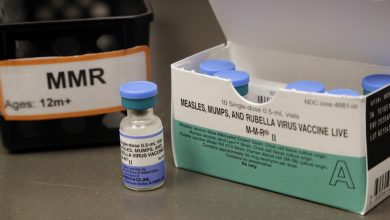AI can predict probability of COVID-19 vs flu based on symptoms
الذكاء الاصطناعي يميز بين أعراض كورونا ونزلات البرد
sciencedaily
Testing shortages, long waits for results, and an over-taxed health care system have made headlines throughout the COVID-19 pandemic. These issues can be further exacerbated in small or rural communities in the US and globally.
Additionally, respiratory symptoms of COVID-19 such as fever and cough are also associated with the flu, which complicates non-lab diagnoses during certain seasons.
A new study by College of Health and Human Services researchers is designed to help identify which symptoms are more likely to indicate COVID during flu season. This is the first study to take seasonality into account.
Farrokh Alemi, principal investigator and professor of Health Administration and Policy, and other Mason researchers predict the probability that a patient has COVID-19, flu, or another respiratory illness prior to testing, depending on the season. This can help clinicians triage patients who are most suspected of having COVID-19.
“When access to reliable COVID testing is limited or test results are delayed, clinicians, especially those who are community-based, are more likely to rely on signs and symptoms than on laboratory findings to diagnose COVID-19,” said Alemi, who observed these challenges at points throughout the pandemic. “Our algorithm can help health care providers triage patient care while they are waiting on lab testing or help prioritize testing if there are testing shortages.”
The findings suggest that community-based health care providers should follow different signs and symptoms for diagnosing COVID depending on the time of year. Outside of flu season, fever is an even stronger predictor of COVID than during flu season. During flu season, a person with a cough is more likely to have the flu than COVID. The study showed that assuming anyone with a fever during flu season has COVID would be incorrect. The algorithm relied on different symptoms for patients in different age and gender. The study also showed that symptom clusters are more important in diagnosis of COVID-19 than symptoms alone.
The algorithms were created by analyzing the symptoms reported by 774 COVID patients in China and 273 COVID patients in the United States. The analysis also included 2,885 influenza and 884 influenza-like illnesses in US patients. “Modeling the Probability of COVID-19 Based on Symptom Screening and Prevalence of Influenza and Influenza-Like Illnesses” was published in Quality Management in Health Care’s April/June 2022 issue. The rest of the research team is also from Mason: Professor of Global Health and Epidemiology Health Amira Roess, Affiliate Faculty Jee Vang, and doctoral candidate Elina Guralnik.
“Though helpful, the algorithms are too complex to expect clinicians to perform these calculations while providing care. The next step is to create an AI, web-based, calculator that can be used in the field. This would allow clinicians to arrive at a presumed diagnosis prior to the visit,” said Alemi. From there, clinicians can make triage decisions on how to care for the patient while waiting for official lab results.
The study does not include any COVID-19 patients without respiratory symptoms, which includes asymptomatic people. Additionally, the study did not differentiate between the first and second week of onset of symptoms, which can vary.
This research was a prototype of how existing data can be used to find signature symptoms of a new disease. The methodology may have relevance beyond this pandemic.
“When there is a new outbreak, collecting data is time consuming. Rapid analysis of existing data can reduce the time to differentiate presentation of new diseases from illnesses with overlapping symptoms. The method in this paper is useful for rapid response to the next pandemic,” said Alemi.
د ب أ
سان فرانسيسكو: ابتكرَ فريقٌ من الباحثين في الولايات المتحدة منظومة للذكاء الاصطناعي يمكنها التمييز بين الإصابة بفيروس كورونا المستجد أو حالات البرد التقليديَّة، لا سيما في مواسم انتشار نزلات البرد، في ضوء التشابه بين أعراض المرضين من حيث الشعور بالإرهاق والسعال وارتفاع درجة حرارة الجسم.
وأكَّد الباحث فاروق عليمي من كلية الطب والخدمات الإنسانية بجامعة جورج ماسون الأمريكية أنَّ المنظومة الجديدة يمكنها التنبؤ باحتمال إصابة المريض بفيروس كورونا أو نزلة برد أو أي مرض آخر في الجهاز التنفسي قبل خضوعه لأي اختبارات أو تحاليل.
وأضافَ: إن هذه التقنية تساعدُ الأطباء في عزل المرضى الذين يُشتبه في إصابتهم بفيروس كورونا، بمجرد بدء ظهور الأعراض عليهم، وبالتالي الحد من قوائم الانتظار لإجراء الاختبارات وإعطاء أولوية للمرضى الذين تتزايد احتمالات إصابتهم.




